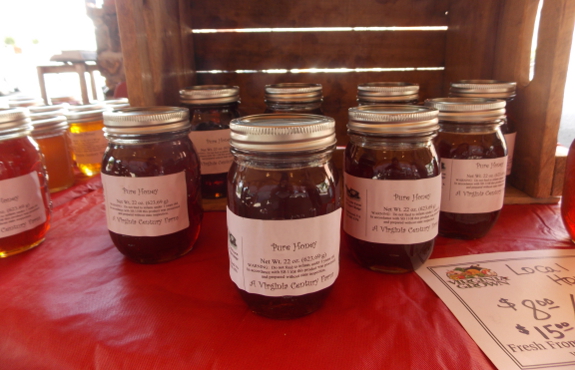
Treating bees with rhubarb

After the rain-barrel workshop on Saturday, I dropped by the St. Paul Farmer's Market
on my way home. I was thrilled to stumble across a local
beekeeper who keeps 28 hives without any chemical use at all, resulting
in only 10% losses per year. For non-beekeepers, those are very
good stats --- even if you use chemicals, 30% to 50% losses are normal
in our area.
I asked the beekeeper
what he did about varroa mites, and he shared his home remedy ---
rhubarb leaves. He told me to make a tea out of rhubarb leaves,
then to dip in a sheet of plain paper. After letting the paper
dry, you put it in your hive the way you would use mite strips in the
fall.
The internet suggests
that the purpose of the rhubarb tea is to extract oxalic acid, which is a
proven treatment for mites. Rhubarb leaves contain 0.2 to 1.3%
oxalic acid, and spraying oxalic acid into bee hives does seem to kill varroa mites with only some damage to the bees.
The less-intrusive strips seem much better than spraying if they work,
though. I may have to try that this fall if our mite counts are high.
Want more in-depth information? Browse through our books.
Or explore more posts by date or by subject.
About us: Anna Hess and Mark Hamilton spent over a decade living self-sufficiently in the mountains of Virginia before moving north to start over from scratch in the foothills of Ohio. They've experimented with permaculture, no-till gardening, trailersteading, home-based microbusinesses and much more, writing about their adventures in both blogs and books.
Want to be notified when new comments are posted on this page? Click on the RSS button after you add a comment to subscribe to the comment feed, or simply check the box beside "email replies to me" while writing your comment.

Thanks for the follow-up. Goop would be easy. Or just shredding the leaves quickly by hand and placing on sheets of paper on top of the frames. Definitely worth a try.
I generally don't have problems with varroa the first year I have a queen, but by the second autumn I need to do something about varroa. Since I have rhubarb, it would be an easy and much cheaper treatment option.
Doing the same thing with hops might also work. A few years back I learned about a product called HopGuard, and wondered if I might be able to make a homemade version with the hops I grow for other purposes.
This patent has a lot of good information; it sounds like the extraction process you mention for the rhubarb is something the patent authors think would work with the hops, too.